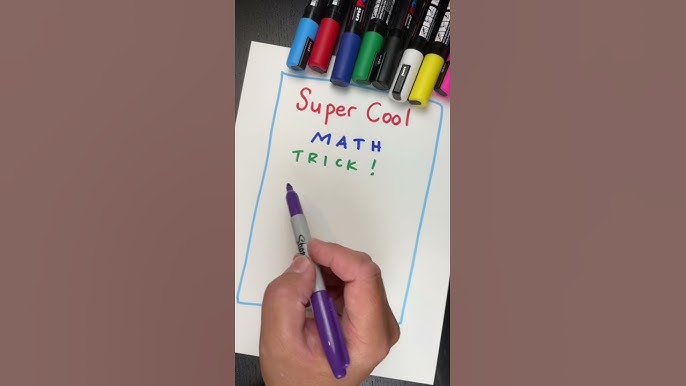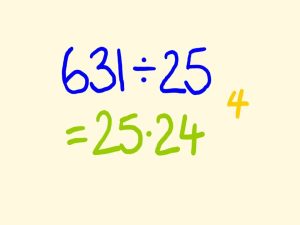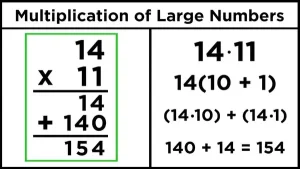Math can sometimes feel like a labyrinth, with complex problems lurking around every corner. But what if I told you that there are tricks to navigate this maze more easily? Many people shy away from math, convinced it’s just too hard or time-consuming. However, with the right techniques up your sleeve, you can tackle even the most daunting calculations in no time.
Imagine breezing through multiplication and division or simplifying fractions as if they were child’s play. Whether you’re a student looking to improve your grades or an adult seeking to sharpen your skills for everyday tasks, mastering these math tricks will not only save you time but also boost your confidence. Let’s dive into some powerful strategies that will transform how you approach math problems forever!
The Power of Vedic Math
Vedic Math, rooted in ancient Indian texts, offers a unique approach to calculations. This system emphasizes mental agility and speed. By breaking down complex problems into simpler steps, it unlocks new pathways for solving equations.
Each technique is designed to streamline thought processes. For instance, the “Vertically and Crosswise” method simplifies multiplication dramatically. You can quickly find answers without traditional long-form methods.
What makes Vedic Math special is its flexibility. It caters to various learning styles and allows for creative problem-solving approaches. Students often find themselves enjoying math rather than fearing it.
Moreover, these tricks enhance memory retention and improve overall mathematical understanding. As learners dive deeper into Vedic principles, they discover an empowering tool that transforms their confidence in handling numbers effortlessly.
Embracing Vedic Math can be revolutionary for both students and professionals alike.
Tricks for Multiplication and Division
Multiplication and division can often feel daunting, but a few clever tricks can simplify the process. For instance, when multiplying by 9, use your fingers. Hold out both hands and lower the finger corresponding to the number you’re multiplying by. The digits on either side of the lowered finger give you the answer.
Another useful method is breaking down larger numbers into manageable parts. For example, instead of calculating 12 x 15 directly, think of it as (10 x 15) + (2 x 15). This makes mental math much easier.
For division, consider using compatible numbers to make calculations smoother. If dividing by 5, for example, multiply both numerator and denominator by 2 first to change it into an easier problem: divide by 10 instead.
These techniques not only save time but also enhance numerical understanding in everyday situations.
Strategies for Simplifying Fractions
Simplifying fractions can seem daunting at first glance. However, a few straightforward strategies can make this task much easier.
Start by finding the greatest common divisor (GCD) of the numerator and denominator. This helps to reduce the fraction to its simplest form. If you know your multiplication tables well, identifying factors becomes quicker.
Another useful method is prime factorization. Break down both numbers into their prime factors and then cancel out any common ones. This visual approach often clarifies which numbers divide evenly.
Using cross-cancellation during multiplication also streamlines calculations. Before multiplying across, look for shared factors in the numerators and denominators that can be eliminated upfront.
Practice these methods regularly with different fractions to build confidence. The more you simplify, the faster you’ll become at recognizing patterns and applying techniques seamlessly in various math problems.
Faster Ways to Calculate Percentages
Calculating percentages can often feel daunting, but a few quick strategies can simplify the process.
Start with easy conversions. Knowing that 10% is just one-tenth of any number helps. If you want to find 20%, simply double that amount. This technique streamlines calculations significantly.
For larger percentages, break them down further. For instance, to calculate 15%, first find 10% and then add half of it again.
When dealing with discounts in stores, remember that subtracting a percentage from a price isn’t as tough as it seems. Simply compute the percentage off and reduce the original price accordingly.
Practice estimating when possible—round up or down for quicker mental math instead of getting bogged down by exact figures every time. These methods will save you time and energy while boosting your confidence in handling numbers effortlessly.
Tips for Mental Math
Mental math can seem daunting, but with a few simple tips, it becomes more manageable. Start by breaking numbers into smaller parts. For instance, instead of multiplying 12 by 15 directly, think of it as (10 + 2) x 15. This allows you to calculate in steps.
Another effective technique is to visualize numbers on a number line or grid. This helps in grasping the relationship between digits and can simplify complex calculations.
Practice estimation regularly. Rounding numbers makes them easier to handle mentally while still providing useful results.
Play games that challenge your mental math skills. Apps and puzzles are great ways to keep your mind sharp without feeling like you’re studying. Making this practice fun will enhance your speed and accuracy over time.
Practice Makes Perfect: Applying These Tricks in Real-Life Situations
Applying math tricks in everyday situations can be both fun and practical. Whether you’re at the grocery store or planning a trip, these skills come in handy.
Picture this: you’re shopping for groceries and see a discount tag. Instead of pulling out your calculator, use quick percentage tricks to find out how much you’ll save. This not only speeds up your calculations but also impresses those around you.
When budgeting, simplifying fractions helps make sense of expenses. Try breaking down large numbers into manageable parts to get a clearer picture of where your money goes.
Even cooking benefits from these techniques. Adjusting recipes often requires quick multiplication or division; knowing shortcuts makes it easier to tweak measurements on the fly.
Engage with friends through math games that challenge everyone’s speed and accuracy. It’s an enjoyable way to reinforce what you’ve learned while building camaraderie over shared challenges.
Conclusion
Mastering math tricks can transform your approach to complex problems. These techniques not only save time but also boost your confidence in handling numbers. Whether you’re tackling multiplication, simplifying fractions, or quickly calculating percentages, these strategies are invaluable.
Don’t underestimate the power of practice. Regularly applying these tricks in real-life situations will reinforce your skills and make them second nature.
Embrace the challenge and keep honing your abilities. Improvement comes with persistence and willingness to learn new methods. With determination and creativity, you’ll find that math doesn’t have to be daunting—it can be an enjoyable puzzle waiting for you to solve it!




